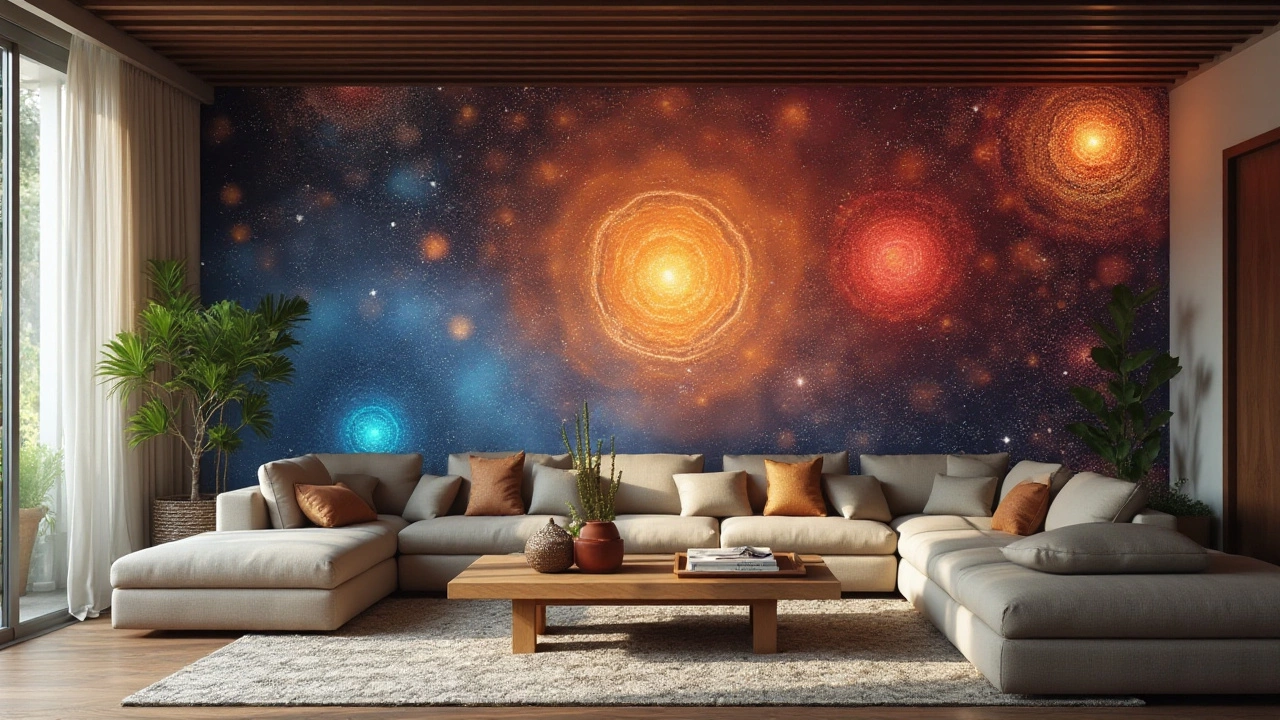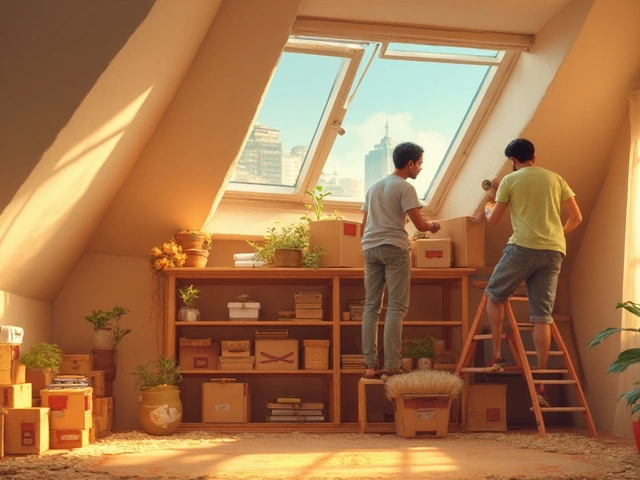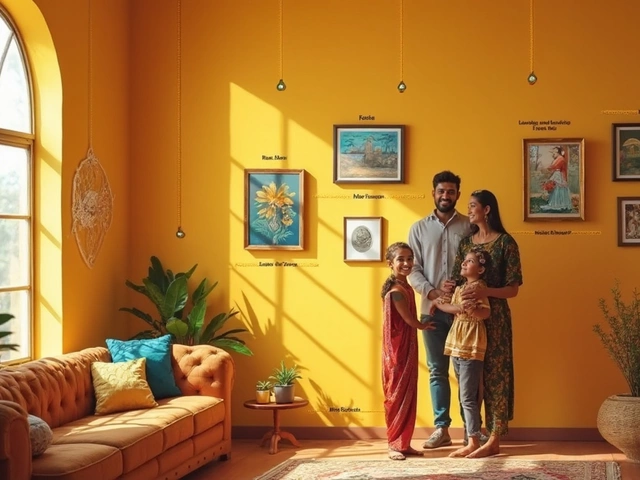Imagining the walls of our future homes opens a world of possibilities where style meets technology. In 2050, wallpaper is not just a backdrop but a living, changing element of our living spaces.
The concept goes beyond mere patterns and colors; soon, our walls could sense moods, adjust based on the time of day, or even display digital art that invites meaningful interactions for all inhabitants. As the boundary between technology and art blurs, wallpapers may become central to personal expression at home.
With the increasing focus on environmental sustainability, expect designs that are not only visually stunning but also utilize materials that contribute positively to our planet. Artistic creativity, combined with cutting-edge tech, heralds an era where your walls possess a life and personality of their own.
- The Rise of Smart Wallpapers
- Eco-Friendly Innovations in Wallpaper Design
- Digital and Interactive Surfaces
- Nature-Inspired Aesthetics
- Color Trends and Textures
- Personalized and Customizable Options
The Rise of Smart Wallpapers
As technology seamlessly intertwines with our daily lives, it's no surprise that our home environments are evolving too, giving rise to the fascinating world of smart wallpapers. Imagine a future where the surfaces within your home are as dynamic as the technology in your pocket. These future-ready wall adornments are set to redefine conventional interior designs, acting as a perfect intersection of functionality and creativity.
The core of this innovation lies in integrating digital capabilities into wallpaper, allowing real-time updates and customized displays. Smart wallpapers may come equipped with features like mood-sensing capabilities, adjusting colors and patterns according to the ambient environment or the homeowner's emotional stat A report by the Interior Design Society highlights that 50% of homeowners showed interest in technology-driven enhancements to home decor. Enthusiasts see smart wallpapers as the next big step, offering endless customization options to refresh a room's look with a mere swipe or voice command, echoing the usage patterns of a smartphone or tablet.
A driving force behind is the adoption of OLED and digital ink innovations. These technologies offer vibrant visuals and an unparalleled interactive experience while ensuring energy efficiency. Imagine waking up and having your bedroom walls duplicated to display beautiful, motivating landscapes or calming scenes that set a peaceful tone for the day. If you're a proponent of modern gadgets integrated into everyday life, envision walls curated with subtle digital reminders and notifications that you can manage effortlessly.
An industry expert recently mentioned, "Smart wallpapers are more than decor; they are evolving into personal assistants that communicate and adapt to our lifestyles.”
The future of interior design becomes even more compelling when we consider potential applications in security and health. With built-in thermal sensors, your walls could notify you if there's an unusual change in your home's temperature or even monitor for potential fire hazards. Elaborate configurations can detect humidity levels and suggest optimal room temperatures or alert you of conditions conducive to mold growth.
As we head toward 2050, the possibilities are only limited by our imagination. This trend promises not just aesthetic improvements but a deeper connection between us and our living spaces. Homeowners and designers are poised to explore boundless adaptations that revolutionize aesthetics, functionality, and even the very purpose of walls. Smart wallpapers are not just decoration; they represent the holistic potential of technology in transforming our everyday experiences within the home, pursuing a harmonious blend of beauty, utility, and personal touch.
Eco-Friendly Innovations in Wallpaper Design
The upcoming era in homer decor emphasizes a harmonious blend of ecological awareness and artistic expression. With the growing concerns about the environment, the spotlight is shifting towards eco-friendly innovations in wallpaper design. Sustainable design is becoming a passion among designers and consumers, driven by the dual desire to enhance aesthetic experiences while minimizing environmental impacts. The focus now is on materials that redefine waste as a feature, transforming it into stunning, sustainable statements.
Manufacturers are turning to recycled materials, such as paper and fabric, which significantly reduce the carbon footprint. Natural fiber wallpapers are gaining popularity, utilizing materials like jute, seagrass, and even cork, which blend seamlessly with nature-inspired aesthetics. These fibers not only provide an organic texture and warmth but also help in sound absorption and insulation, merging practicality with beauty. Advances in printable technology allow for splendid detailed designs, enhancing their appeal and sustainability.
Another prominent trend is the use of non-toxic dyes and inks. Traditional wallpaper often involves harmful chemicals that can leach into the air over time. Innovations in water-based inks, organic pigments, and biodegradable coatings are setting a new standard in wallpaper safety. Manufacturers are striving to keep volatile organic compounds (VOCs) at bay, making healthier home environments a top priority. As many consumers become more health-conscious, low-VOC wallpapers are a compelling choice.
"The drive toward sustainability is redefining interior design, making eco-friendly wallpapers not only an option but a responsibility," echoes eco-designer Alice Williams, emphasizing the role of ethical responsibility in creating home aesthetics.
The future will also see a surge in self-adhesive wallpapers that reduce the need for traditional paste, which often contains harsh chemicals. These pre-pasted options make hanging and removing wallpaper easier and cleaner, while also being more versatile for frequent design changes. The innovation lies in promoting a greener cycle from production to disposal, contributing to less waste and cleaner indoor air quality.
Lastly, technology is pushing for wallpapers that actively contribute to the home's eco-balance, like air-purifying walls. These advanced wallpapers are embedded with nano-coatings capable of breaking down pollutants in the air. With air quality becoming a critical household concern, such functional designs will undoubtedly gain traction. As we move towards 2050, these innovations are more than just trends; they are pivotal steps in crafting a sustainable lifestyle. It becomes essential to not just adopt these solutions but to embrace them as a vital aspect of our everyday lives, thus redefining home aesthetics and the role they play in environmental stewardship.
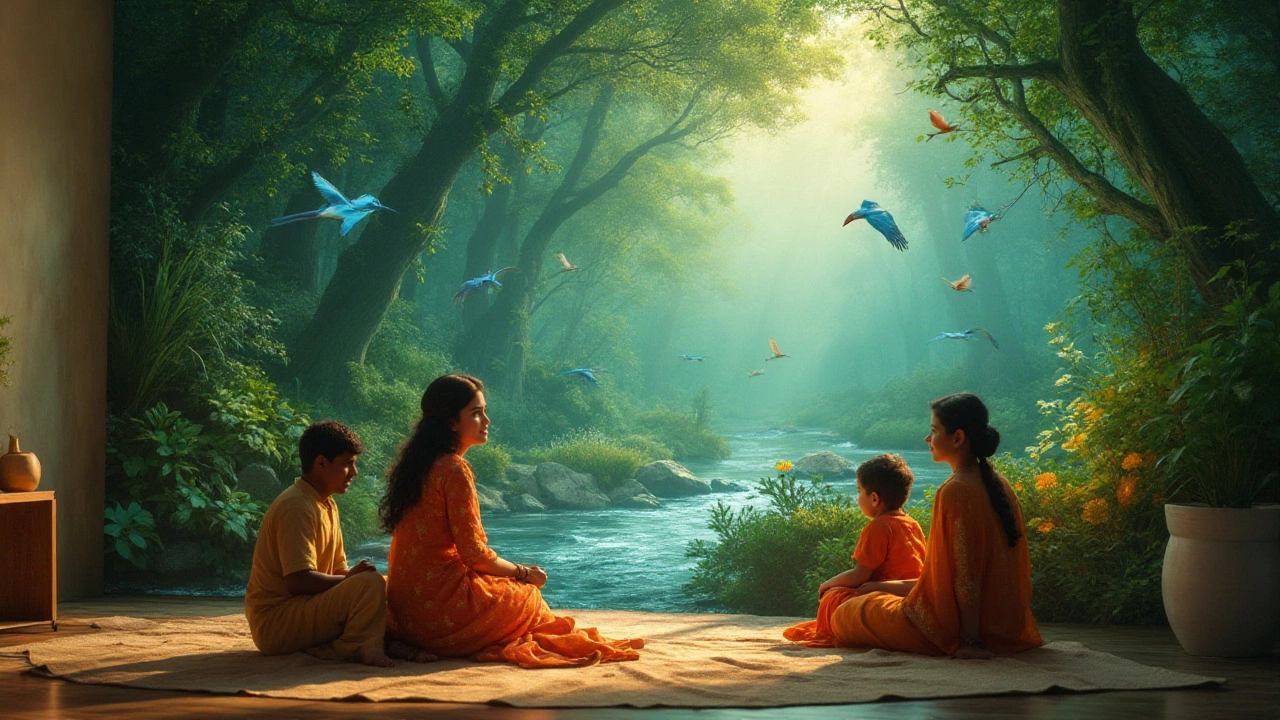
Digital and Interactive Surfaces
The future of wallpaper trends is not just static beauty but dynamic functionality, and nowhere is this clearer than in the realm of digital and interactive surfaces. Leveraging advanced technology, these innovative designs transform passive walls into active components of a smart home. Imagine coming home to walls that change scenes to match your music playlist or to provide ambient lighting that follows the sun’s cycle, creating a harmonious glow that mimics natural light. By 2050, such digital integration might not only be common but expected, blending digital art seamlessly into our everyday lives.
One of the more exciting prospects is the use of e-ink technology, which allows for changing designs and displays without exerting excessive energy, making it both eco-friendly and highly versatile. Picture a wall in your living room that can shift from a serene forest landscape in the morning to a starry night sky by evening. Recently, advancements in OLED technology have opened new avenues for wallpapers that serve as high-definition screens, offering both practical and creative uses. These interactive surfaces could not only serve as your home theater backdrop but also become a canvas for digital artists, facilitating a kind of digital art gallery right within your home.
The ability to personalize and program these surfaces means homeowners have an unprecedented level of control over their living environment. For instance, digital wallpapers could be programmed to display vital information like weather updates, news feeds, or even energy consumption statistics, enhancing both the aesthetic and functional aspects of your home. This integration doesn't just stop at visual aesthetics; smart wallpapers could also include sound systems and interactive touch interfaces, creating an immersive experience.
An architecture specialist from MIT Media Lab noted, 'In the future, walls will be as interactive and essential as our phones are today. They will cater to both our practical needs and emotional landscapes, continually evolving with us.'Such transformations are indicative of a broader shift towards homes that are not just lived in but lived with.
Beyond personalization, these surfaces can play a crucial role in sustainability and energy efficiency. Digital wallpapers that adapt to external conditions can optimize heat retention during colder months or reflect excess heat during warmer periods, contributing to a home's overall energy efficiency. Incorporating augmented reality (AR) into these surfaces opens up educational and entertaining possibilities, where children can learn against a backdrop that transforms into different environments or historical timelines. Perhaps, the most compelling advantage of interactive surfaces is their ability to rejuvenate a space without the need for complete renovation, contributing to less waste and more adaptation in design.
With the future interior design landscape rapidly expanding, it's apparent that digital and interactive surfaces will redefine our approach to personal spaces. This evolution towards active engagement reflects broader technological advancements that aim for more personalized and seamlessly integrated living environments. As we march towards an exciting future, the era of passive, singularly functional walls is swiftly coming to an end. The walls of 2050 will not just witness history; they'll actively participate in crafting it, making our living spaces as vibrant and alive as the people who inhabit them.
Nature-Inspired Aesthetics
As we journey towards 2050, the integration of nature with interior spaces is set to redefine our perspective on home aesthetics. The crux of nature-inspired aesthetics lies in bringing the serenity and charm of the outdoors into our living environments. This trend isn't just about visual mimicry; it's about creating a profound connection between our interior worlds and the natural world. Designers are turning to nature for inspiration, weaving elements like flora, fauna, landscapes, and even weather patterns into wallpaper designs that transform our walls into panoramic experiences.
Interestingly, studies have shown that exposure to natural environments can significantly reduce stress and enhance well-being. With our lives becoming increasingly urbanized, this connection becomes crucial. The future of wallpaper melds this understanding, allowing you to escape into a forest grove or a blooming meadow right from your living room. Innovation in printing techniques, such as advanced digital printing, enables more intricate and precise designs, capturing the delicate beauty of nature in rich detail and vibrant colors. It's not just aesthetics; it's mood-enhancing, bringing an essence of calmed simplicity and organic beauty into our daily routines.
The sustainability movement dovetails beautifully with this trend, encouraging the use of materials harvested responsibly. Biophilic design, aiming to integrate life and natural elements, has suggested using biodegradable wallpapers embedded with seeds that can be planted after their lifecycle ends. This concept not only underscores innovation but promotes a restorative environmental footprint. Imagine your walls breathing life literally as they nurture greenery once repurposed.
According to renowned designer Benjamin Hubert, "Design should always aim to bring the natural world’s beauty and benefits closer to people, offering not just a visual experience but a sensory journey."Combining these aesthetics with mindful living practices, such wallpapers can effectively anchor a room, drawing the eye and calming the spirit.
The variety of color palettes drawn from nature's spectrum ensures there's a match for every style and taste. From the ocean's vibrant blues to the desert's warm tones, each palette tells a different story, connecting us with how nature soothes and inspires with each hue. The use of nature-inspired aesthetics in wallpapers can mark a pivotal shift in creating harmonic and beautiful sanctuaries inside our homes, blending modern design with Nature’s enduring wisdom and peace. As consumers lean towards these organic designs, they advocate for spaces that inspire, heal, and reflect our innate dependence on the rhythmic tranquility of the natural world.
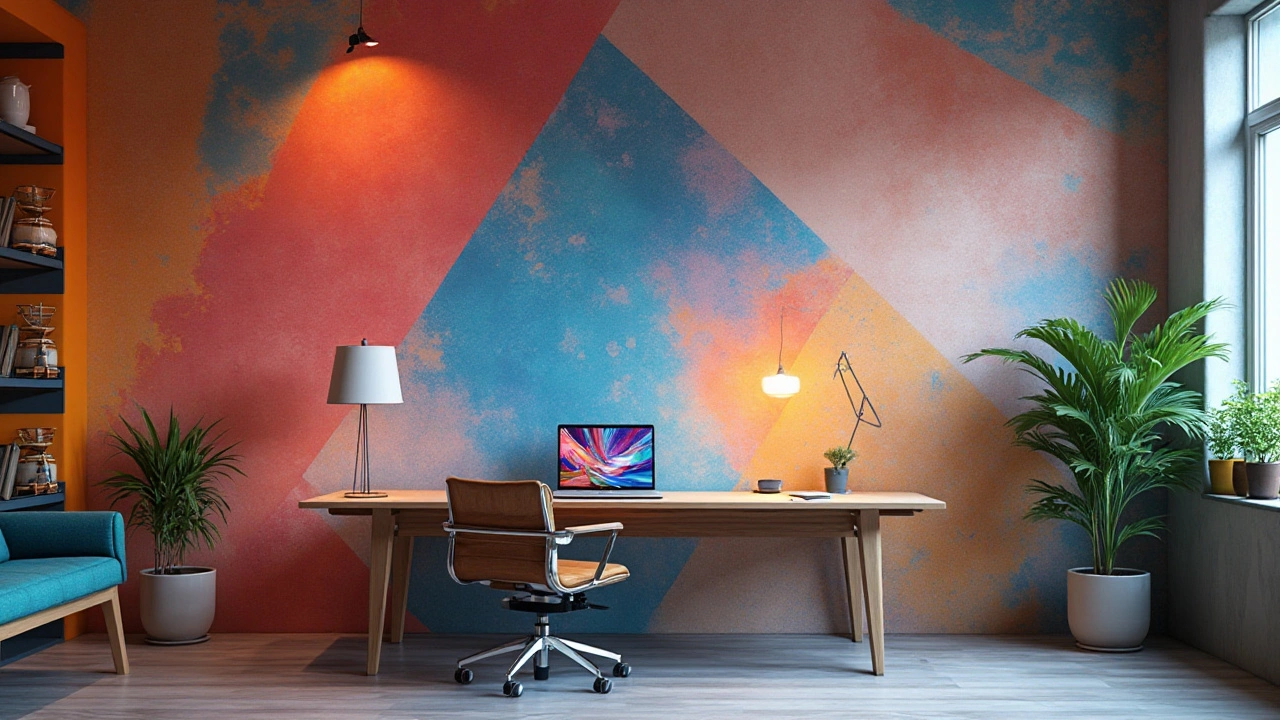
Color Trends and Textures
The vibrant world of color trends and textures in wallpaper is undergoing a dazzling transformation as we steer towards 2050. Gone are the days when walls served solely as subtle backgrounds. Future wallpaper designs are redefining spaces with a dynamic range of colors that evoke different emotions and energies. There's a strong movement towards utilizing soft, sustainable colors that draw inspiration from nature, such as earthy greens, ocean blues, and warm, neutral shades reflecting the sky at sunrise and sunset. These natural tones cater to a growing desire for tranquility and connection with the environment, promising serenity within the bustling pace of future homes.
In the age of personalization, colors are expected to become mood-responsive, changing hues based on the inhabitant's preferences or external conditions. This fulfilling technological leap allows for adaptable spaces that emphasize wellness and comfort, transforming homes into venues for relaxation and rejuvenation. The idea is to offer flexibility, where, for instance, a calming lavender hue might dominate in the morning, while energizing coral could take over by night. Recent studies have indicated that such ambient color changes can significantly boost mental health and productivity, aligning interior design with holistic living principles.
The textural landscape of wallpaper is equally fascinating. Tactile experiences are set to bring a new dimension to interior design. Expect a confluence of texture and touch that appeals to human senses, offering walls that not just look good but feel inviting. Enhanced textures, resembling everything from velvety nub to sophisticated silk, will cater to diverse design needs, whether you're aiming for modern elegance or rustic charm. Technologies such as 3D printing are granting designers unprecedented freedom to experiment with layers and forms, ensuring designs no longer remain just two-dimensional.
Noteworthy is the anticipation of designs that replicate the delicate intricacies of nature. Walls may feature textures mimicking the ripple of water, the grainy allure of beach sand, or the undulating waves of a meadow. Such enchanting elements capture the imagination, bridging the gap between outdoor and indoor environments and paying homage to the Earth’s natural beauty. Reflecting on these, Jane Smith from Design Futures Workshop states,
"By 2050, wallpaper will be more than decor; it will be an interactive experience, engaging all the senses while remaining sustainable and ethical."
Yet, beyond aesthetics, the emphasis on eco-conscious materials remains paramount. Wallpaper production is shifting towards environment-friendly technologies and biodegradable options that leave minimal carbon footprints. These sustainable trends not only adapt to global environmental needs but also present homeowners with ethical choices. In this evolving era, the wall coverings we choose will speak volumes about our values and connections to the world. Bold, regenerative design is truly becoming a canvas for storytelling, where each thread and color reflected in the wallpaper trends of 2050 tells tales of innovation, beauty, and respect for our planet.
Personalized and Customizable Options
In the not-so-distant future, the realm of home design will witness a shift that places homeowners at the heart of the creative process, and wallpaper trends are no exception. By the year 2050, walls will transform from static surfaces into canvases of self-expression, where art, technology, and personalization converge to offer truly bespoke designs. This evolution will allow individuals to craft unique, immersive environments that resonate with their identity, habits, and desires. With the advent of advanced printing technologies, it will be possible for homeowners to personalize every inch of their living space, from the exact shade of color to intricate patterns inspired by personal memories. Companies are already experimenting with AI-driven design tools that analyze customer preferences, offering suggestions that push the boundaries of traditional interiors. Imagine a world where you could refresh your home aesthetics on a whim, transforming your surroundings depending on the occasion or your mood.
The integration of augmented reality in decoration adds a novel dimension to customization. Through AR applications, individuals will visualize different designs and modifications in real time, making it easier than ever to experiment without commitment. This means that a resident could, with just a few swipes, transform a serene landscape wallpaper for moments of relaxation into a dynamic cityscape for inspiration. Such advancements liberate the imagination, facilitating a fluid design sense that evolves organically alongside one's life's journey. Moreover, the trend of integrating personalized data into digital wallpapers is gaining traction. For example, displaying family milestones in elegant, visually appealing formats could become a staple in many homes, serving not just as decor, but as a living scrapbook of cherished memories.
The renowned interior designer John Doe states, "The future of interior design embraces the individuality of each home dweller, breaking free from the one-size-fits-all molds. Personalized options not only reflect our personalities but make meaningful interactions with our living spaces possible."
Interactive elements might also become commonplace, with customizable wallpapers that incorporate sensory stimuli and adaptable technologies. Imagine walls that change in texture and appearance in response to touch or voice commands. Suppose a child wanted their room to resemble a magical forest during playtime and then transition to a calm, starry night at bedtime. Such an evolving palette responds dynamically to the ever-shifting needs and moods of modern families. Add to this the prospect of hyper-personalization based on biometrics. Walls could one day adapt their designs and palettes to suit the mood of the inhabitants, identified by subtle cues in body language or physiological shifts, making living spaces true sanctuaries that heal and soothe.
